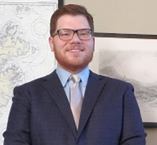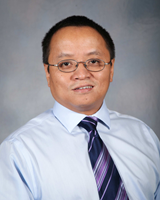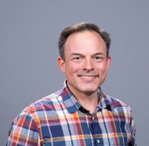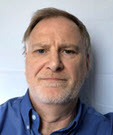MC-RD-01 Radiation Damage: Fundamentals and Applications
Using ion beam irradiation as a surrogate for neutron displacement damage in microelectronics: Simple theory and equivalency considerations
Authors:
Joshua M. Young, Gyorgy Vizkelethy, Nick A. Asper, William R. Wampler, Barney L. Doyle, Edward S. Bielejec
Understanding how electronics perform in extreme radiation environments is important for reliable and safe operations in commercial aviation, space exploration vehicles, satellites, and nuclear reactor or accelerator facilities. To understand the degradation in performance of these electronics and the fundamental physics mechanisms, neutron or ion irradiation must be performed as well as computational modeling coupled with device characterization. In this talk we discuss the use of ion irradiation to emulate neutron displacement damage in microelectronics. We begin with a brief facility overview of Sandia’s Ion Beam Laboratory and highlight how we explore electronic degradation of transistors due to displacement damage. A theoretical background for displacement damage will be presented followed by practical considerations for converting between ion fluence to equivalent neutron fluence. We will analyze Si and wide bandgap device degradation due to ion irradiation, comparison to neutron irradiation, and correlation of damage metrics and equivalency. Finally, we show how simple models can be used to extract underlying physical processes for electronic device performance.
About Speaker

Josh Young is a Senior Member of the Technical Staff at Sandia National Laboratories. Josh received his B.S. in physics from Tarleton State University in 2015. He then continued to the University of North Texas where he received his M.S. (2017) and Ph.D. (2020), both in physics. In 2020, he took a post-doctoral appointment at Sandia’s Ion Beam Laboratory where he continued on as a staff member. Currently, Josh is leading a wide variety of research tasks including efforts to understand the performance of commercial and custom electronics to various radiation environments. He is also involved in fundamental materials research to understand the role ionizing radiation plays in polymer degradation. When he’s not at work, Josh enjoys time with his family, playing music at his local church, or enjoying a good history book.
Sandia National Laboratories is a multimission laboratory managed and operated by National Technology & Engineering Solutions of Sandia, LLC, a wholly owned subsidiary of Honeywell International, Inc., for the U.S. DOE’s National Nuclear Security Administration under contract DE-NA-0003525. The views expressed in the article do not necessarily represent the views of the U.S. DOE or the United States Government.
MC-RD-01 Radiation Damage: Fundamentals and Applications
Accelerator-based radiation materials science for nuclear engineering
Lin Shao
Department of Nuclear Engineering, Texas A&M University, College Station Texas, United States
Upon neutron and particle irradiation, the created supersaturated point defects lead to extended defect formation and microstructural changes, eventually causing various material degradations that limit reactor performance. Irradiation responses of great concern for fission reactors include void swelling, irradiation hardening, corrosion, and creep. The past few decades have witnessed success in alloy development, enabling safe reactor operation and additional service time extension. On the other hand, material development for advanced reactors remains a technological bottleneck. Challenges arise from the extreme irradiation conditions and the synergistic effects of various phenomena. Accelerator ion irradiation serves as a surrogate for reactor neutron irradiation, introducing damage at a rate several orders of magnitude higher than a testing reactor. This talk will review the fundamentals of radiation materials science, with a particular focus on methodologies to reduce or avoid material failures. Topics include compositional engineering, grain engineering, and heterogeneous structure engineering. In the second half of the talk, the application of accelerators in radiation materials science is reviewed. Topics include the reliability and challenges of accelerator irradiation, and methods to close the gap between accelerator and reactor irradiation.
About Speaker:
 Lin Shao is Robert Cochran University Professor at Texas A&M University. He is also the director of the Accelerator Laboratory in the Department of Nuclear Engineering. He obtained his BS degree in Nuclear Physics from Peking University and his PhD in Physics from the University of Houston. Prior to joining Texas A&M University, he was a postdoctoral fellow at Los Alamos National Laboratory. His research interests are radiation materials science and accelerator-based ion beam processing. He is a fellow of the American Nuclear Society.
Lin Shao is Robert Cochran University Professor at Texas A&M University. He is also the director of the Accelerator Laboratory in the Department of Nuclear Engineering. He obtained his BS degree in Nuclear Physics from Peking University and his PhD in Physics from the University of Houston. Prior to joining Texas A&M University, he was a postdoctoral fellow at Los Alamos National Laboratory. His research interests are radiation materials science and accelerator-based ion beam processing. He is a fellow of the American Nuclear Society.
MC-NE-01 Nuclear Energy: Basics and Advances
Electrical Power from Nuclear Fission: A Tutorial for Conventional and Advanced Reactors
Peter Hosemann
Departments of Nuclear Engineering and Mechanical Engineering, University of California at Berkeley, Berkeley CA 94720, United States
Currently, nuclear power contributes approximately 18% of the United States' electricity production, with 94 operational power reactors. For the past 60 years, nuclear fission has provided substantial benefits, and today, more advanced nuclear reactor concepts are being developed for the future. But how is electricity generated from fission, and why is there a push to develop new reactor concepts? What differentiates thermal and fast reactors, and how is the heat produced that eventually transforms into electricity?
This lecture will cover the fundamental concepts of nuclear fission as it stands today and explore the various types of reactors that have operated in the past and are operational now. Additionally, we will discuss historical issues that have occurred in nuclear power plants and the lessons learned to improve the design and safety of future plants. Furthermore, we will discuss how accelerators can play a vital role to help address the issues associated with nuclear power generation.
About Speaker:

Peter Hosemann is Professor in the Department for Nuclear Engineering and Mechanical Engineering at the University of California Berkeley and director of Manufacturing 360 research center and the associated shared user facility. Professor Hosemann received his PhD in Material Science from the Montanuniversität Leoben, Austria in 2008 while he conducted the research on lead bismuth eutectic corrosion, ion beam irradiations and microscale mechanical testing was carried out at Los Alamos National Laboratory. He continued his research at Los Alamos National Laboratory and joined the UC Berkeley faculty in 2010. Professor Hosemann has authored more than 300 per reviewed publications since 2008. In 2014 he won the best reviewer of the journal of nuclear materials award, the ANS literature award and in 2015 he won the TMS early career faculty fellow award and the AIME Robert Lansing Hardy award, was awarded the E. S. Kuh Chair of the college of Engineering at UCB and won the TMS-Brimacombe medal 2022.
Vacuum Theory and Technology
These two 90-min session classes will include Basic and Advanced Vacuum Technology – Vacuum concepts covering rough, high and ultrahigh vacuum pumps, advanced vacuum practices.
MC-VAC-01 Vacuum Class I
Ultra-High Vacuum Seminar: Part 1 of 2 Session Series
John Screech, Senior Applications Engineer, Agilent Technologies, Vacuum Products Division
This class provides the basics for understanding the nature and of ultra-high vacuum (UHV) which is a key enabling condition for many types of scientific inquiry and experimentation. Topics in session one will include an introduction to high vacuum and ultra-high vacuum, including the relationship between Pumping Speed, Throughput, Gas Load and Conductance. A description of the working principles of vacuum pumps and gauges used in rough, high and ultra-high vacuum will also be discussed. The curriculum for this 90 minute class is excerpted from Agilent’s one-day UHV Seminar and is intended to provide an introduction to ultra-high vacuum systems and practice for scientists, engineers and technicians. Attendees will receive a digital copy of the slide deck as a PDF file.
MC-VAC-02 Vacuum Class II
Ultra-High Vacuum Seminar: Part 2 of 2 Session Series
John Screech, Senior Applications Engineer, Agilent Technologies, Vacuum Products Division
This class provides further details into the challenges in achieving ultra-high vacuum (UHV) pressure. Session two will delve into the inter-relationship of pumping technologies used from primary vacuum to UHV, system troubleshooting techniques, and material selection. The curriculum for session two of this 90 minute class is excerpted from Agilent’s one-day UHV Seminar and is intended to provide an introduction to ultra-high vacuum systems and practice for scientists, engineers and technicians. Attendees can download digital copy of the slide deck as a PDF file (please see the attachments listed below).
 Class Instructor : John Screech, Sr Applications Engineer, Agilent Technologies (Vacuum Products)
Class Instructor : John Screech, Sr Applications Engineer, Agilent Technologies (Vacuum Products)
John graduated in 1986 with a Bachelor’s degree in Physics and has worked in analytical instrumentation ever since. His career has spanned general Mass Spectrometry, Vacuum System development, and Contraband Detection. John joined Agilent in 2011 and currently leads Training and Education Programs for the Vacuum Products division. John also assists Agilent’s sales force and end-users with pre- and post-Sales Applications Support. He is based near Toronto, Canada.
Workshop files for download by participants:
